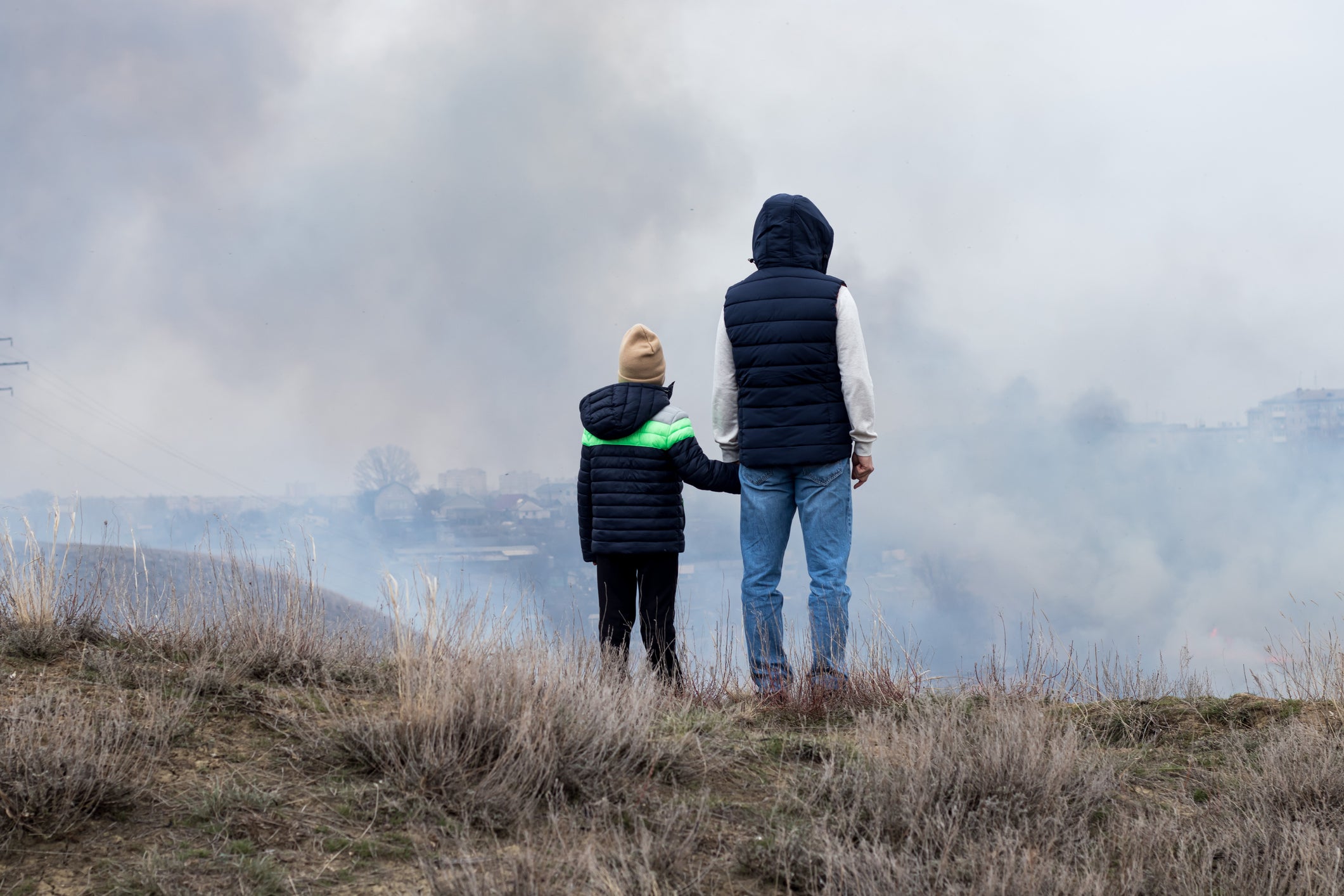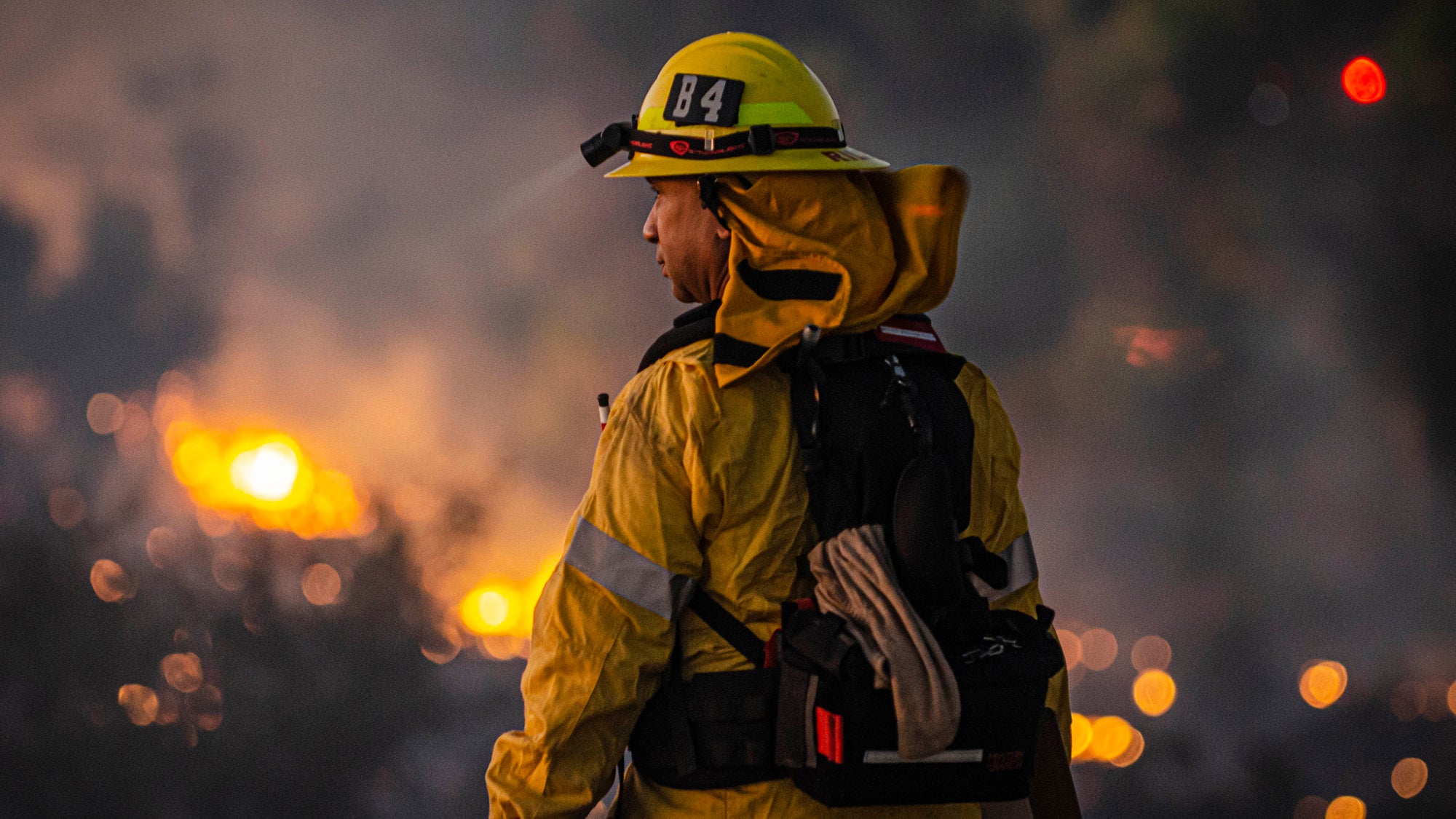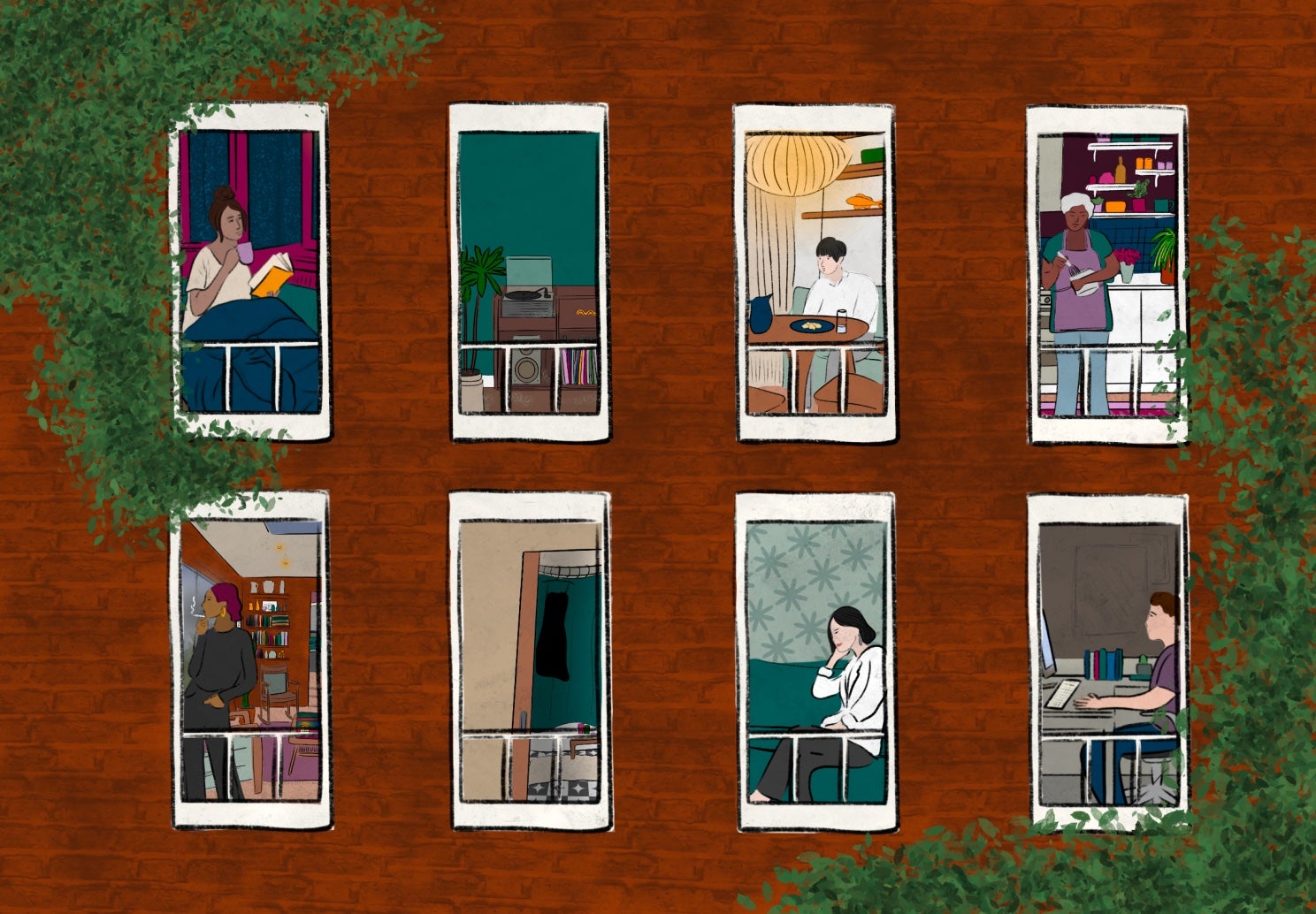Fighting ‘forever chemicals’
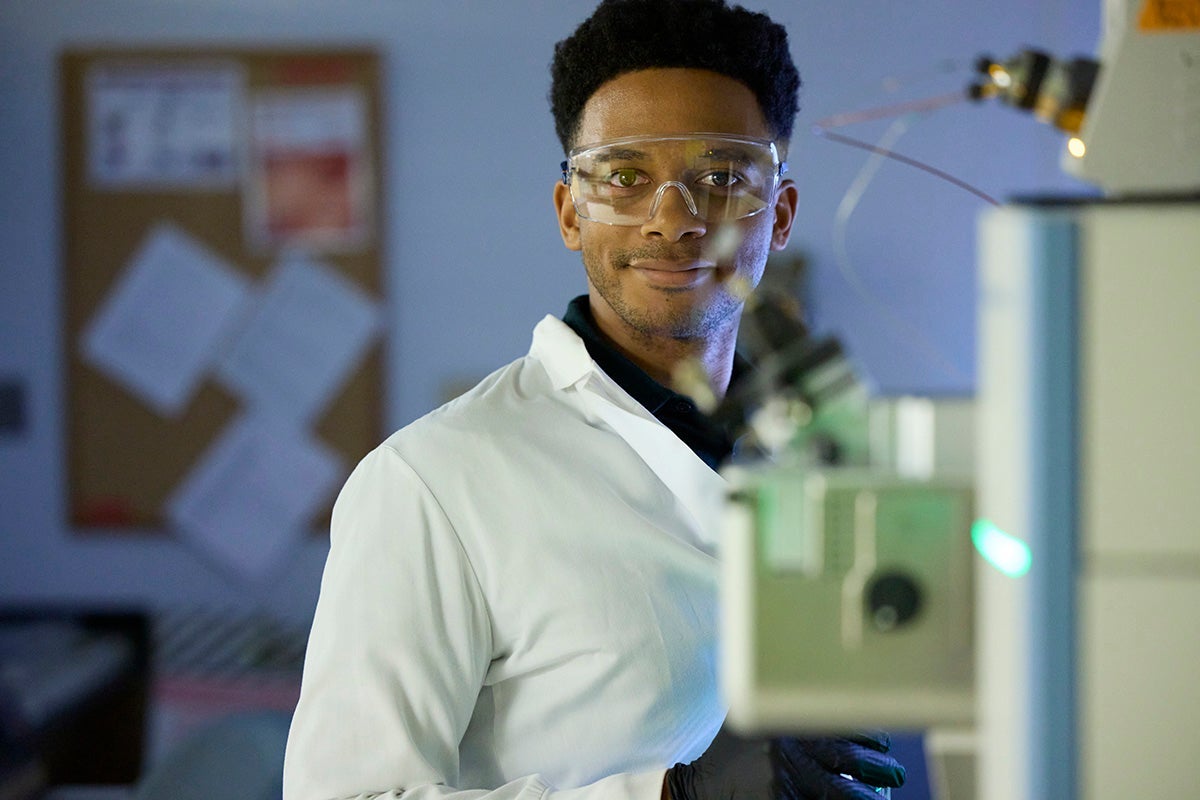
May 1, 2024 – Jahred Liddie, PhD ’25, has spent several years conducting research on PFAS (per- and polyfluoroalkyl substances)—also known as “forever chemicals” because of their persistence in the environment. The chemicals are widely used in consumer products for their oil- and water-resistant properties and have been linked with serious health harms. The EPA just set the first-ever national limits on several types of PFAS, but there are thousands of other types that remain unregulated. Here, Liddie—a PhD candidate in population health sciences at the Harvard Kenneth C. Griffin School of Arts and Sciences studying environmental health at Harvard T.H. Chan School of Public Health—discusses his research and his hope that it will inform future policy to minimize PFAS health risks.
Ever since I can remember, I’ve been interested in environmental issues. My mom is a retired elementary school teacher. When I was a kid we’d go to the library a lot and get out books on animals and plants and natural disasters. That really got me interested in environmental health.
As an undergraduate at Harvard I studied environmental engineering. I liked the field because it combined a lot of disciplines I was interested in, including chemistry, physics, and biology, and it had a practical purpose, which in my opinion is ultimately to improve human health and well-being.
I was introduced to the field of environmental health through a class with Elsie Sunderland on applied environmental toxicology, which I took as a junior. Seeing how passionate Elsie was about these topics and how knowledgeable she was really got me interested in wanting to do some of that research myself. I worked with Elsie throughout my undergrad and master’s education, and she became my adviser when I started my PhD program in 2021. Currently I’m a teaching fellow for that same environmental toxicology class.
When I first learned about PFAS, it was around the time that the science community was becoming more concerned about it. I learned how persistent these man-made compounds are in the environment, how studies have shown that they can impact a wide range of human organ systems, and how in many cases those impacts occur at very low concentrations. I remember being really shocked. I thought about some of the other legacy contaminants we’ve dealt with—like PCBs [polychlorinated biphenyls] and PBDEs [polybrominated diphenyl ethers] —and how we as a society want to use these sorts of compounds because they’re useful in all sorts of industrial processes and consumer products, but later we learn that there are health effects and that people are being exposed at high levels. I remember being very frustrated because the same thing was happening with PFAS that had happened with other groups of chemicals in the past.
I started working as a research assistant in Elsie’s lab during my junior year. I worked with Xindi (Cindy) Hu, who was a PhD student at the time and later became a postdoc in the lab. I helped Xindi on a national geospatial analysis of likely PFAS contamination sources and drinking water concentrations of PFAS. That study pointed to places with the highest levels of PFAS—for example, near military bases and airports, where they use firefighting foams that contain PFAS, and near industrial sites and wastewater treatment plants. A paper that was part of my dissertation research included a similar analysis as Xindi’s paper, but with newer state monitoring data on drinking water that quantified PFAS at lower levels. That paper also investigated sociodemographic disparities in PFAS drinking water contamination, showing that communities with higher proportions of Black and Hispanic residents were more likely to be exposed to harmful levels of PFAS pollution.
Between getting my bachelor’s and my master’s, I worked for about three years as a sustainability consultant. In that role I helped quantify potential environmental impacts of products over their life cycle, from the production of their raw materials through their disposal, recycle, or reuse. We looked at building and construction materials, including steel, steel rebar, glass, and concrete. I also worked on some consumer products such as yoga mats and eyeglasses. The environmental impacts we looked at included things like emissions of greenhouse gases or ozone depleting gases. However, these impacts often did not include factors related directly to human health or social issues—which was ultimately the impetus for me to leave consulting and pursue graduate school.
In our current work on PFAS, we’re looking at drinking water to see if concentrations have changed over time. Some types of PFAS have been phased out, but new ones have also been introduced, so we need to look at concentrations to see what the overall effect has been.
Sometimes doing this work can feel overwhelming. PFAS are such a large class of chemicals, and we really only know about a small fraction of them. The EPA has recently regulated only a few PFAS in drinking water. Many experts think we should have a more class-based approach to PFAS. I support this, because taking the route of regulating PFAS one by one can take a very long time and puts a lot of the burden on researchers and federal and state agencies to prove that PFAS are unsafe only after they’ve been introduced to the market—and after they may have already harmed people’s health.
Even though PFAS is everywhere, there is some low-hanging fruit for consumers, including options like using PFAS-free nonstick pans, knowing where your water comes from, and installing water filters. But sometimes I get frustrated with the focus on individual choices. I think ultimately the onus should be shifted more onto corporations to use safer chemicals instead of leaving it to consumers to figure out ways to avoid exposure.
For the future, I want to continue doing research, possibly government work that has a research component, or a research-oriented fellowship, or maybe a job outside academia. I may focus on projects related to drinking water, which is a pretty understudied area. Ultimately, I hope that my work can help shape policy that will minimize the risks from PFAS and other environmental health hazards.
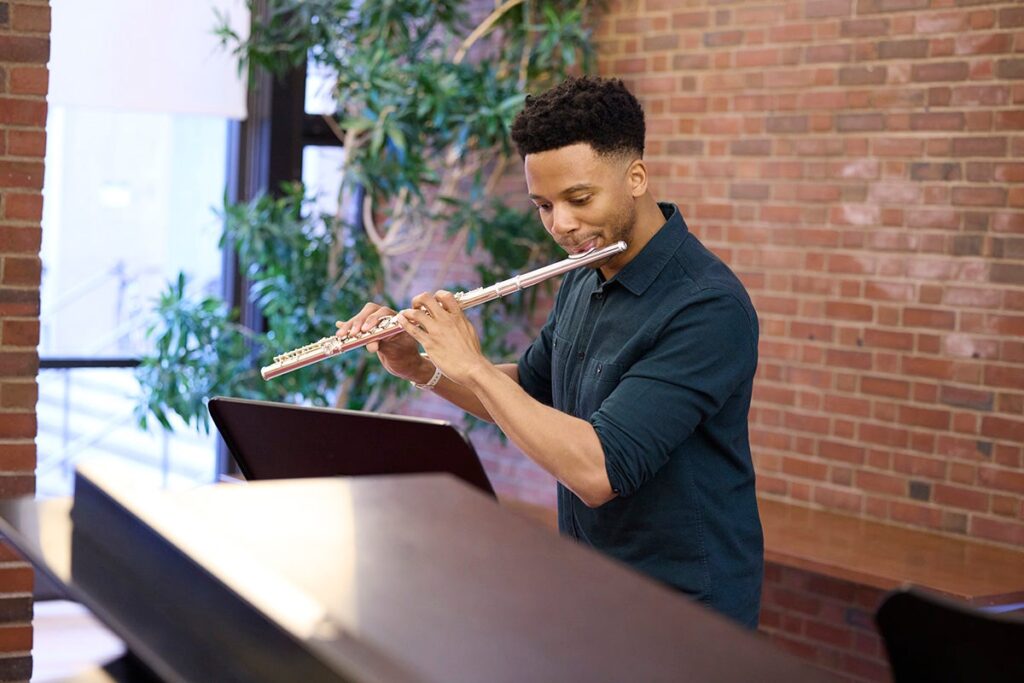
In my spare time I play the flute. I’ve played since I was 10. I like classical music and chamber music. I play in a chamber music group run by Mather House, one of the undergraduate houses at Harvard. One thing I really like about playing music is that, because it’s so in the moment, you can’t really focus on anything else. That makes it a nice break from work.
Photos: Kent Dayton
As a master’s student, Liddie received support from the Harvard Library Pforzheimer Fellowship, established by a gift of the Carl and Lily Pforzheimer Foundation to support community and public service. As a doctoral student, Liddie is supported in part by the T32 Environmental Epidemiology Training Program, funded by the National Institute of Environmental Health Sciences. Liddie was also awarded the Skaff Family Environmental Graduate Fellowship, created through a gift from Daniel and Michelle Skaff to provide incentive-based awards for graduate students studying and researching the environment in the Harvard Kenneth C. Griffin Graduate School of Arts and Sciences.
